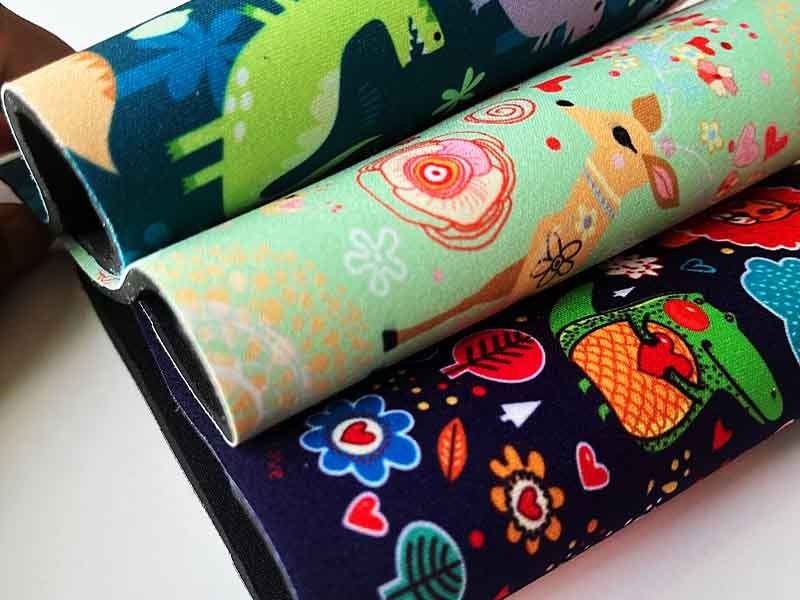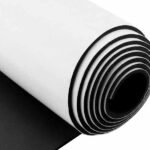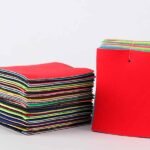Neoprene isn’t your typical fabric — it’s a durable, flexible, and water-resistant material used in everything from wetsuits and sports gear to tote bags, koozies, laptop sleeves, and medical accessories. But ask anyone who has tried to print on neoprene, and they’ll tell you: it’s not as straightforward as printing on cotton or polyester. The spongy rubber core, closed-cell structure, and laminated surfaces can make ink adhesion tricky, yet the results — when done right — can be bold, vivid, and long-lasting.
To print on neoprene fabric, choose a method compatible with its surface — such as screen printing, heat transfer vinyl, sublimation on laminated layers, or UV digital printing. Proper surface preparation, compatible inks, and controlled temperature and pressure are essential for durable, vibrant results. Working with an experienced manufacturer ensures quality and efficiency.
If you’ve ever admired a sharp logo on a neoprene sleeve or a colorful pattern on a wetsuit, you’ve seen what’s possible. Today, we’ll break down the printing methods, preparation steps, equipment choices, and durability tips — and share insights from Szoneier, a manufacturer with over 18 years in custom neoprene production. Whether you’re a brand owner seeking OEM/ODM solutions or a designer exploring custom projects, you’ll find exactly what you need to make your neoprene designs come to life.
What Is Neoprene Fabric and Why Is Printing on It Different?
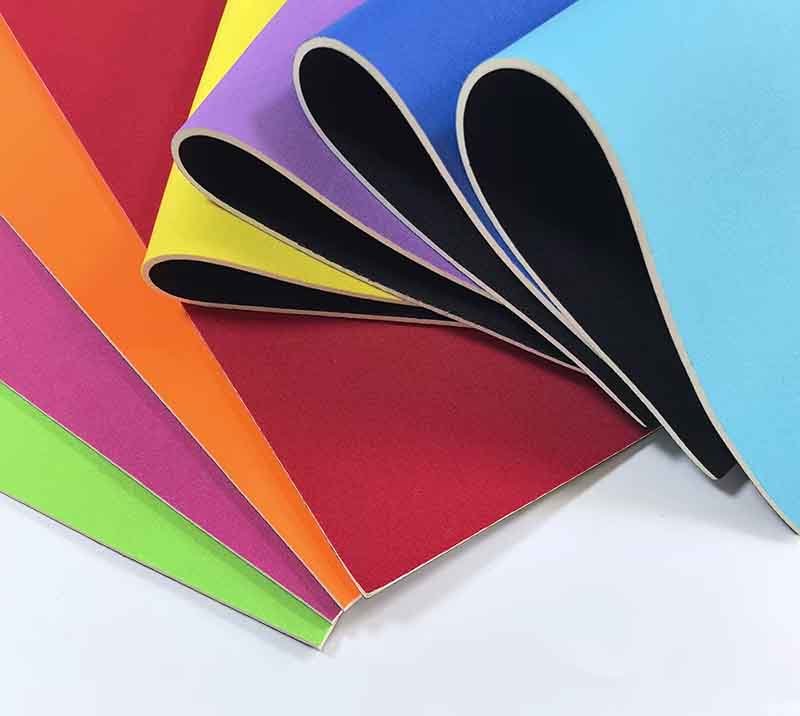
Neoprene is a synthetic rubber known for its flexibility, insulation, and resistance to water and chemicals. Printing on it is different from textiles because of its non-porous surface, stretch, and thickness. These characteristics require specialized inks, controlled printing conditions, and sometimes laminated fabric layers to achieve durable, vibrant designs.
Neoprene, technically polychloroprene, was first developed in the 1930s as a versatile synthetic rubber. Its unique structure makes it soft yet resilient, with excellent thermal insulation and water resistance — qualities that explain its popularity in wetsuits, protective cases, beverage coolers, and even fashion accessories.
However, neoprene’s closed-cell foam core means it doesn’t absorb inks like woven fabrics do. This limits certain printing methods and demands careful surface preparation. Often, neoprene products are made with laminated outer fabrics — such as polyester or nylon — bonded to the foam. This laminated layer can be printed on more easily, while the neoprene underneath retains its performance properties.
Key printing challenges on neoprene include:
- Ink Adhesion – Without the right pretreatment, inks can peel or crack.
- Stretch and Recovery – Designs may distort if the material is stretched after printing.
- Heat Sensitivity – Excess heat can damage the foam or adhesives.
- Thickness Variation – Uneven surfaces may cause printing defects.
For these reasons, printing on neoprene requires a mix of technical know-how and the right equipment. This is why many brands choose to work with OEM manufacturers like Szoneier, who understand both the material science and the printing technologies that work best.
Which Printing Methods Work Best for Neoprene Fabric?
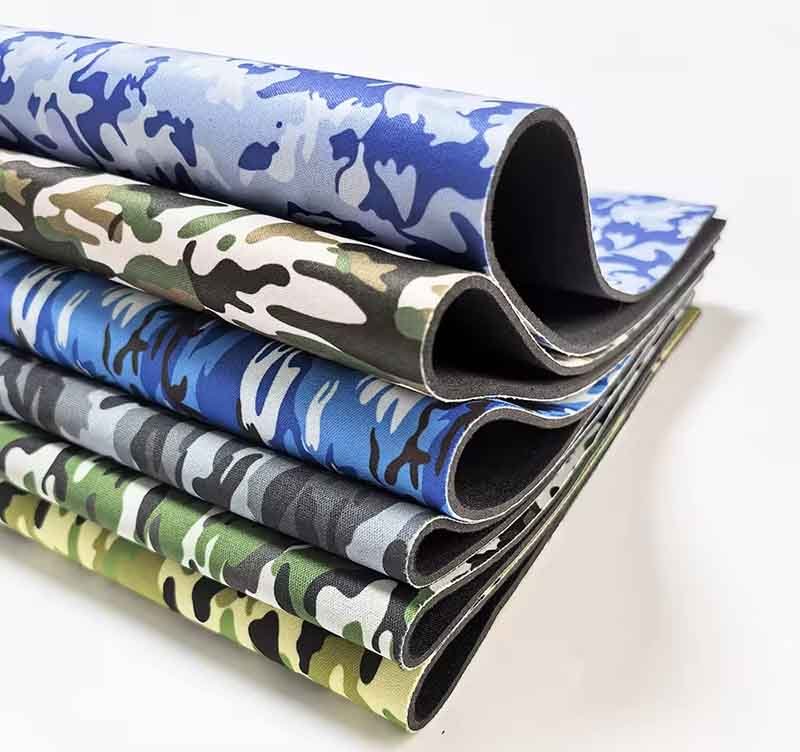
The most common methods for printing on neoprene are screen printing, heat transfer vinyl, UV digital printing, and sublimation on laminated fabric. Each has strengths: screen printing for bold colors, HTV for small runs, UV for detailed graphics, and sublimation for all-over patterns (on polyester-laminated neoprene). The choice depends on design complexity, durability needs, and production scale.
| Method | Best For | Advantages | Limitations |
|---|---|---|---|
| Screen Printing | Logos, solid colors | Durable, vivid colors, cost-effective for bulk | Not ideal for gradients or photographic detail |
| Heat Transfer Vinyl (HTV) | Small runs, personalization | Flexible, easy to apply, good for multi-color | Limited breathability, can peel over time |
| UV Digital Printing | Complex designs, gradients | High detail, no minimum order, full-color | Higher cost, may need coating |
| Sublimation (on laminated fabric) | All-over prints, polyester outer | Long-lasting, vibrant | Only works on polyester-laminated neoprene |
Screen Printing remains the go-to for promotional neoprene products like koozies and bags. Heat Transfer Vinyl is popular for custom names and small-batch work. UV Printing excels in photographic or intricate designs and works directly on the surface without heat. Sublimation is unmatched for all-over patterns but only works if the neoprene has a polyester fabric outer layer.
How to Prepare Neoprene for Printing?
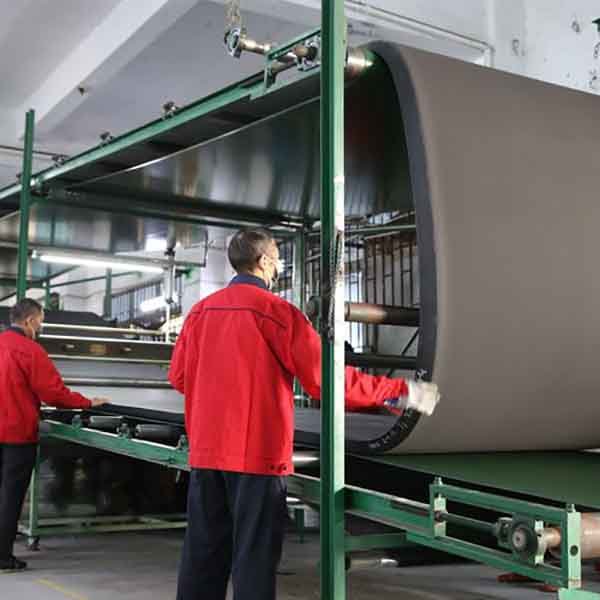
To prepare neoprene for printing, start by cleaning the surface to remove dust, oils, and manufacturing residues. Flatten and smooth the material to avoid printing defects, and, if necessary, apply a primer or coating to improve ink adhesion. For laminated neoprene, ensure the fabric layer is wrinkle-free. Proper preparation ensures vibrant colors, sharp details, and long-lasting prints.
Printing on neoprene is only as good as the preparation behind it. Even with the right ink and method, a poorly prepped surface can cause smudges, fading, or peeling within weeks. Professional neoprene printing starts with meticulous preparation, especially for OEM/ODM orders where quality and brand reputation are at stake.
Step 1: Cleaning the Surface
Neoprene, especially fresh from manufacturing, often carries mold release agents, oils, and dust that can repel ink.
- For laminated neoprene (polyester or nylon outer): Use a lint-free cloth dampened with mild detergent solution, then rinse and air-dry.
- For raw neoprene: Wipe with isopropyl alcohol or a manufacturer-approved solvent to degrease the surface without damaging the foam.
Step 2: Flattening & Smoothing
Wrinkles, folds, or surface irregularities can cause print misalignment and color gaps.
- Use a low-heat pre-press (80–100°C / 176–212°F) for 3–5 seconds to gently flatten the material.
- Avoid excessive pressure to prevent foam compression.
Step 3: Applying Primers or Coatings
Some printing methods, like UV printing or solvent-based screen printing, benefit from a primer layer that improves ink adhesion.
- PU-based primers work well for raw neoprene.
- Fabric laminates may not need primer unless printing very fine details.
Step 4: Cutting Before or After Printing
If the product has a complex shape (like a bag panel or wetsuit part), decide whether to print before or after cutting. Printing before cutting ensures full coverage, but post-cut printing can allow more precise logo placement.
Pro Tip from Szoneier:
In our factory, we follow a three-stage QC process before printing:
- Visual Inspection – Check for surface defects.
- Clean & Pre-Press – Ensure uniform surface texture.
- Sample Test Print – Confirm adhesion and color before starting full production.
This ensures every custom neoprene bag, koozie, or wetsuit panel we print meets international quality standards.
What Printing Inks and Materials Are Compatible with Neoprene?
Printing on neoprene requires inks that can bond with synthetic, non-porous surfaces while maintaining flexibility. Solvent-based inks, plastisol inks, and specialty polyurethane-based inks are common. For laminated neoprene, sublimation inks work on polyester layers, while UV-curable inks adhere to smooth surfaces. Heat transfer films and vinyl are also popular for durable, colorful designs.
The wrong ink choice is one of the fastest ways to ruin a neoprene printing job. Because neoprene has a rubbery, non-absorbent core, the ink needs to sit on the surface and bond chemically or mechanically rather than soak into fibers.
Common ink types for neoprene:
- Solvent-Based Inks – Ideal for direct printing, they dissolve a thin layer of the surface and embed pigments for strong adhesion. Great for long-term outdoor use, but require proper ventilation and handling.
- Plastisol Inks – Common in screen printing, they form a durable, flexible layer. Need precise curing temperatures to avoid damaging the neoprene.
- Polyurethane (PU) Inks – Offer elasticity and chemical resistance, making them great for products that will stretch or be exposed to moisture.
- UV-Curable Inks – Used in UV digital printing; they harden instantly under UV light, minimizing heat damage.
- Sublimation Inks – Only work on polyester-laminated neoprene. They gasify under heat and infuse into the fibers for permanent, vibrant colors.
Material Add-ons:
- Heat Transfer Vinyl (HTV): Flexible, comes in a variety of finishes (matte, gloss, glitter), good for logos and text.
- Printed Heat Transfer Films: Allow full-color, photographic designs to be transferred onto the fabric layer of neoprene.
- Protective Coatings: Clear coats can improve scratch resistance and extend print life.
Pro Insight:
At Szoneier, we often pair PU-based inks with polyester-laminated neoprene for products like laptop sleeves and tote bags, because it offers excellent adhesion, elasticity, and vibrant color payoff. We also advise against water-based inks for raw neoprene surfaces, as they don’t bond effectively without pretreatment.
Do You Need Special Equipment to Print on Neoprene?
Yes. Printing on neoprene requires specialized equipment depending on the method: screen printing presses for bulk work, heat presses for vinyl and sublimation, UV flatbed printers for direct digital printing, and sublimation printers for polyester laminates. Precision in temperature, pressure, and curing is critical to avoid damaging the material.
While hobbyists can experiment with small heat presses and cutting machines, professional-grade neoprene printing demands equipment designed to handle thicker, less flexible surfaces.
Essential Equipment by Method:
- Screen Printing: Large-format screen presses with adjustable off-contact settings to account for neoprene’s thickness.
- Heat Transfer & Sublimation: Industrial heat presses with accurate temperature control (±2°C) and even pressure distribution.
- UV Digital Printing: Flatbed printers that can accommodate material up to 5–10mm thick, with adjustable print heads.
- Cutting & Finishing Tools: CNC cutters for precision shaping before or after printing.
Temperature Guidelines:
- Neoprene starts to deform at ~150°C (300°F). Laminates may handle slightly higher heat, but always test.
- Heat press dwell time is usually shorter than with other fabrics to prevent foam compression.
Why OEM Manufacturers Have the Advantage:
At Szoneier, we have dedicated neoprene printing lines equipped with tension-free transport systems, allowing prints to cure without stretching or distorting the material. This is crucial for products like wetsuits, where precise logo placement is essential.
How to Ensure Print Durability and Color Quality on Neoprene?
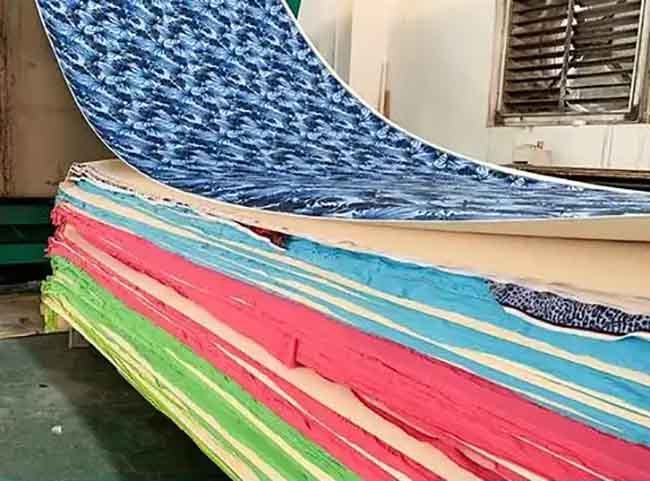
To ensure long-lasting prints on neoprene, control heat and pressure, use compatible inks, apply protective coatings, and conduct durability testing. Proper curing and post-print treatments prevent cracking, peeling, and fading.
A good print isn’t just about looking sharp on day one — it must endure real-world use. Whether it’s a neoprene bag being carried daily or a wetsuit exposed to saltwater and sunlight, the print must hold up.
Best Practices for Durability:
- Correct Curing: Ensure inks are fully cured at the recommended temperature without overheating the foam.
- Protective Coatings: Apply matte or gloss clear coats to seal in inks, especially for UV prints.
- Colorfast Testing: Test against washing, UV exposure, and abrasion.
- Stretch Testing: Flex the material to check for cracking or peeling.
Testing Standards:
- ISO 105-B02: Lightfastness
- ISO 6330: Domestic washing
- ISO 12945-2: Abrasion resistance
Szoneier’s QC Approach:
We run all prints through a multi-stage durability check, simulating wear equivalent to 12 months of daily use. This ensures branding remains sharp and legible even after repeated stretching, folding, and exposure to elements.
Is It Possible to Print on Both Sides of Neoprene Fabric?
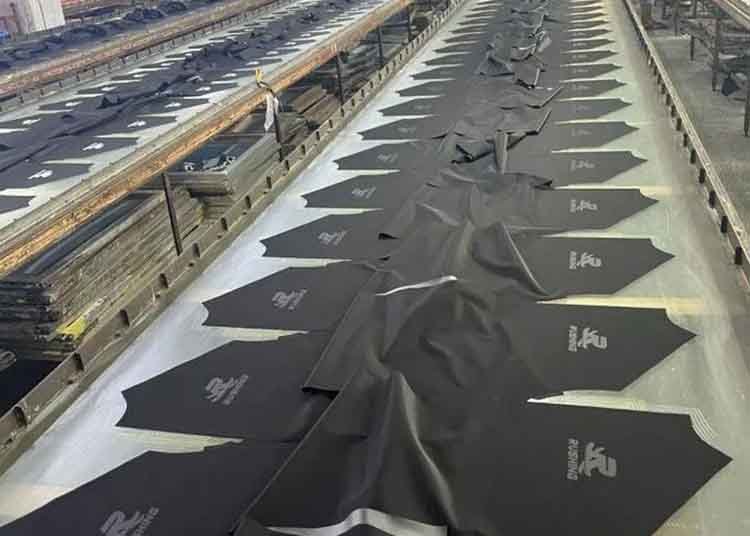
Yes, but it depends on the product design and neoprene type. Double-sided printing is possible if both sides have suitable fabric laminates or smooth surfaces. It requires precise registration and careful heat management to avoid damaging the opposite side.
Printing on both sides is common in neoprene mats, promotional items, and reversible products. However, raw neoprene without lamination on both sides is challenging to print directly.
Considerations:
- Material Thickness: Thinner neoprene (2–3mm) is more prone to heat transfer between sides, risking print damage.
- Registration: Precise alignment is essential to ensure graphics are correctly positioned on both sides.
- Ink Bleed Prevention: Use barrier layers or low-heat methods to prevent the first side from being reactivated.
Pro Tip:
At Szoneier, for reversible designs, we recommend dual-laminated neoprene (polyester/nylon on both sides). This allows independent printing on each side without compromising durability or alignment.
Are There Eco-Friendly Printing Options for Neoprene Products?
Yes. Sustainable neoprene printing options include water-based inks (on laminated surfaces), recycled neoprene substrates, and low-impact digital printing. These reduce VOC emissions and waste while maintaining quality.
As eco-conscious production becomes a priority for brands, printing on neoprene is evolving. While traditional solvent inks and virgin neoprene have environmental impacts, sustainable alternatives are emerging.
Eco-Friendly Options:
- Recycled Neoprene: Made from post-consumer or post-industrial waste rubber.
- Water-Based Inks: Safer for operators and the environment, though best suited for laminated fabrics.
- Low-Energy Curing: UV LED curing uses less energy and emits fewer greenhouse gases.
- On-Demand Printing: Reduces waste by printing only what’s needed.
Szoneier’s Green Commitment:
We offer recycled neoprene options and use eco-certified inks for certain product lines. Our on-demand OEM service helps brands avoid overproduction, aligning with sustainability goals.
Conclusion
Printing on neoprene isn’t just about decoration — it’s about combining design, function, and durability to create products that stand out in the market. Whether you need custom neoprene bags, koozies, wetsuits, gloves, or covers, the printing method, ink choice, and preparation all matter.
With over 18 years of neoprene manufacturing expertise, Szoneier provides OEM/ODM solutions that ensure your designs not only look stunning but also last. From prototype to full-scale production, we offer low MOQ, free design support, and fast turnaround.
Let’s turn your neoprene printing idea into a high-quality, market-ready product. Contact Szoneier today!

